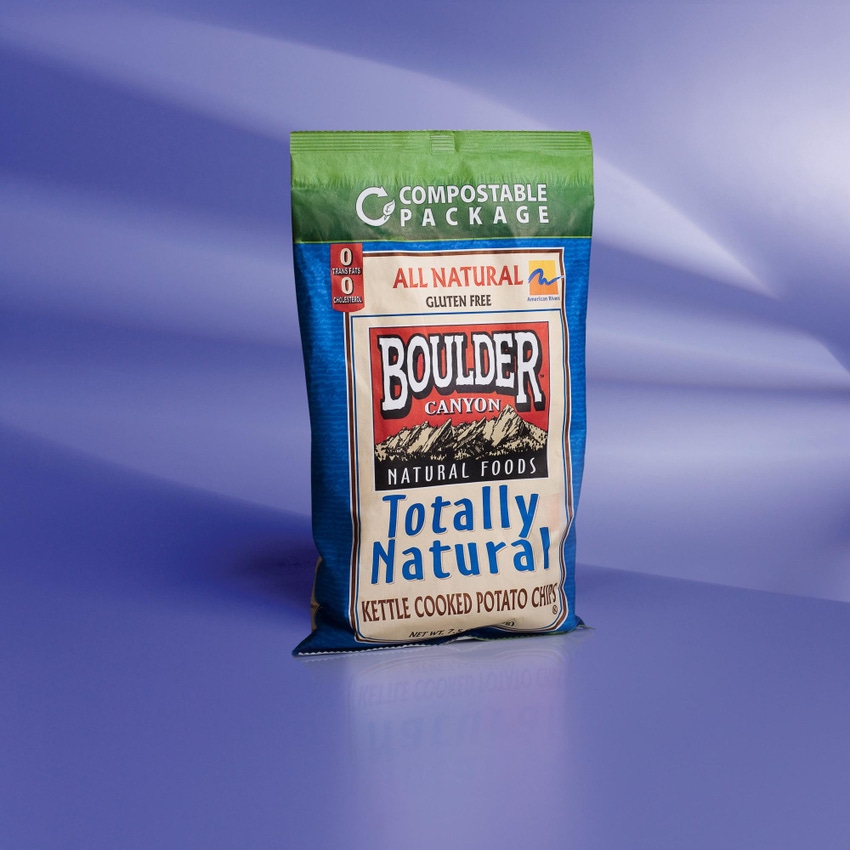What happens when a leading global producer of cellulose films for packaging and labels meets the worlds leading producer of sustainable specialty papers? The chemistry between the two generates an innovative laminate solution, at least in this case. The companies in question are Innovia Films and Sappi Fine Paper Europe, and they have now joined forces to develop new laminate solutions for flexible packaging applications.
November 18, 2011

, and they have now joined forces to develop new laminate solutions for flexible packaging applications. The new laminates provide technical functionality, are made from renewable resources and are suitable for industrial and home composting or even for use in anaerobic digestion plants, providing a good source of renewable fuel.
Flexible Packaging: Bane or boon?
Hailed with enthusiasm by packaging manufacturers and end users, the use of flexible films has enabled the development of cost-effective packaging solutions coupled with excellent product protection characteristics. In this way, all packaging films contribute to waste reduction throughout the packaged-goods supply chain.
That's the good news.
The bad news is that, over the years, the flexible packaging market has developed from simple paper wrapping and bags to very sophisticated multilayer and multimaterial packaging for barrier protection and shelf life extension. Flexible packaging films can be made of single-web substrates such as flexible plastics (PE, PP, polyester or PA), flexible foils and flexible papers or can be coated, laminated or coextruded with other materials to enhance their physical properties in various ways. The increasingly sophisticated mix of materials, inks and adhesives used to produce flexible packaging, however, severely reduce the number of end-of-life options available.
According to a report recently published by the U.S. Flexible Packaging Assn., flexible packaging makes up just over 2%, or some 6 million tons, of the municipal solid waste generated in the U.S. each year. About 10% is combusted at waste-to-energy plants, leaving 5.4 million tons to be disposed of in landfills. In Europe, legislation is in place that states that "packaging should be suitable for material recycling, energy recovery or composting or for reuse if reuse is intended." In practice, this means that most flexible packaging is currently burnt, as the possibilities for recycling are extremely limited.
The best of both worlds
Innovia Films and Sappi Fine Paper Europe have pooled their respective strengths to develop innovative, biodegradable laminate structures made of renewable materials that are suitable for end users in the food, confectionery and pharmaceutical industries.
Both companies are convinced that the best end-of-life options for flexible paper/film laminates are composting and, ideally, anaerobic digestion, a process in which the methane which is formed during degradation is captured and turned into a useful energy source.
Innovia brings to the project its cellulose-based NatureFlex family of films that is manufactured from wood pulp from managed plantations. The films are fully certified to the European (EN13432) and American (ASTM D6400) norms for compostable packaging. Suitable for home composting, they also biodegrade in a wastewater environment, and most grades can be processed through anaerobic digestion. Cellulose films have excellent natural gas barriers, yet are moisture permeable. Unique among films for flexible packaging, transparent colored cellulose films can be produced by incorporating dyes into the material during manufacture. Compared with polymer films, cellulose is less prone to static, which greatly assists machinability
Sappi's contribution comprises its expertise in manufacturing flexible packaging papers. The company now also offers coated and uncoated compostable paper options; Algro Nature is a unique compostable one side coated paper; Leine Nature is an uncoated equivalent, which is also compostable.
Trials underway
Innovia Films and Sappi have now started trials with converters to demonstrate the capabilities of their paper/film laminates in terms of sustainability and technical packaging solutions. Their laminates fit seamlessly into all the future waste scenarios prescribed in the EU's packaging directive, which make them a welcome alternative to existing laminate structures. End users seeking sustainable flexible packaging solutions were recruited to test the processing properties of the materials and trials have been carried out using both extrusion and adhesive laminate systems.
In a joint statement issued by both companies, John Fell, Global Marketing Director for Innovia Films commented "Both companies are committed to evolving this joint partnership and will announce future developments in sustainable packaging solutions, based on renewable and recyclable forest products, as and when they become available."
About the Author(s)
You May Also Like


